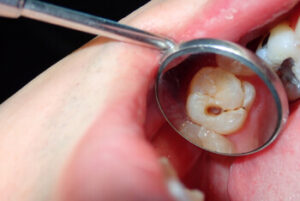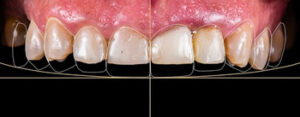Have you ever flinched from the sting of a hot coffee or the chill of an ice cream? Or maybe you’ve been dealing with a persistent toothache that won’t ease up? If you’ve mentioned it to your dentist, there’s a good chance the term “root canal” came up. But what leads someone to need this kind of dental treatment? In this guide, we’ll discuss the most common causes of root canal therapy, recognise the early warning signs, and explore how this procedure helps safeguard long-term oral health.
First Things First: What Is a Root Canal?
Before we get into the causes, it’s helpful to understand what a root canal is. A root canal, often called endodontic therapy, is a routine dental procedure where the damaged or infected pulp is carefully removed from within the tooth. This pulp includes nerves, blood vessels, and soft connective tissue that sit in the centre of the tooth.
When infection or damage reaches this inner area, often from decay or injury, the root canal system must be cleaned and sealed to preserve the tooth. If not treated in time, the infection can extend to the surrounding tissue and lead to more serious dental problems.
 Tooth Decay: The Leading Cause of Root Canals
Tooth Decay: The Leading Cause of Root Canals
So, what causes root canal issues in most cases? Deep decay. Tooth decay usually starts on the outer layer (enamel) and progresses inward if not caught early.
When the decay reaches the pulp chamber, bacteria invade and trigger an infection. This infected dental pulp can result in intense tooth pain, sharp sensitivity to hot or cold food and drinks, and even gum swelling. If you find yourself experiencing pain while biting down or lingering discomfort, it could mean the pulp has become infected and requires treatment.
Hidden Danger: Cracked or Fractured Teeth
Dental damage isn’t always obvious. A crack in a tooth may be so small that you can’t see it, but that doesn’t mean it’s harmless. Even the smallest cracks in a tooth can allow bacteria to enter the inner layers, potentially causing an infection that may need root canal treatment.
You might feel a jolt of pain when chewing or notice discomfort from cold food or beverages. Over time, bacteria can move through the crack and infect the root canal system, causing damage that only endodontic therapy can fix.
Too Much Dental Work on One Tooth
Believe it or not, undergoing several dental procedures on a single tooth can irritate and weaken it. If you’ve had multiple fillings, cosmetic repairs, or other dental work on the same tooth, the pulp inside can become inflamed.
This irritation, especially from heat generated by dental tools, may result in nerve damage or a breakdown of the soft tissue within. When that happens, the tooth may no longer respond to other forms of treatment and a root canal becomes necessary to save it.
Physical Injury That Damages the Tooth from Within
A hit to the face, whether from an accident, a fall, or a sports-related incident, can damage a tooth even if the outside looks fine. The force can affect the nerves and blood vessels inside the pulp chamber, which can eventually die off and become infected.
This kind of trauma often goes unnoticed at first. However, as the damage progresses, symptoms like swelling, tenderness, or the feeling of a loose tooth may appear, which are all signs that a root canal may be needed.
The Effects of Grinding Your Teeth
Grinding your teeth, a condition known as bruxism, might seem harmless at first. However, consistent grinding can wear down the tooth enamel, creating pressure and microfractures that aren’t visible but can still be damaging.
Over time, this wear exposes the tooth pulp to bacteria, increasing the risk of infection. Grinding can also damage surrounding teeth and lead to long-term issues. If your dentist notices signs of wear, they may recommend a customised night guard to protect your teeth and help prevent the need for a root canal later on.
Gum Disease That Reaches the Tooth Roots
Severe gum disease can do more than affect your gums it can compromise the structures that support your teeth. If the infection spreads from the gums to the roots of your teeth, it can also reach the pulp chamber.
Once bacteria infiltrate the root tip or surrounding tissue, you may experience swelling, discomfort, or pain. At this stage, a root canal may be the only way to remove the infection and save the tooth.
How to Tell if You Might Need a Root Canal
Some people experience obvious symptoms, while others may not feel much until the infection has advanced. Here are signs to look out for that might suggest you need a root canal:
- Strong or persistent tooth pain when chewing or applying pressure
- Sensitivity to hot or cold that doesn’t fade quickly
- Gum swelling or tenderness near a particular tooth
- Discolouration or darkening of a single tooth
- A pimple or boil-like bump on the gums
- A tooth that becomes loose unexpectedly
- Increased discomfort when lying down
If you experience any of these signs, it’s essential to see your dentist as soon as possible. Early detection can prevent further issues and help save your natural tooth.
How the Root Canal Procedure Works
Here’s a step-by-step overview of what happens during root canal treatment:
- Assessment and Imaging: Your dentist will use X-rays to examine the root canal system and detect any signs of infection or damage.
- Anaesthetic: A local anaesthetic is used to numb the area and make the process comfortable.
- Pulp Removal: A small opening is made to access the infected pulp, which is then carefully removed.
- Cleaning and Disinfection: The canals are shaped and cleaned to eliminate any remaining bacteria.
- Sealing: A material called gutta-percha is used to fill the space, and a temporary filling may be placed.
- Restoration: A follow-up visit may be needed to place a dental crown or permanent restoration that strengthens the treated tooth.
Do Root Canals Hurt?
There’s a common myth that root canals are painful, but with modern techniques and local anaesthesia, most people feel little more than mild discomfort. In fact, the purpose of the procedure is to relieve the pain caused by infection, not add to it.
Patients often report that the pain before the treatment from the infected pulp is much worse than anything they feel during or after the root canal itself.
Why You Shouldn’t Ignore It
If an infected root canal is ignored, the consequences can be serious. The infection may spread beyond the tooth to the jawbone, surrounding tissue, or even other parts of the body. Some risks include:
- Formation of a dental abscess
- Loss of the affected tooth
- Jawbone deterioration
- Spread of infection
- Worsening pain and swelling
Addressing the problem early through endodontic treatment significantly reduces these risks and helps restore your dental health.
Aftercare: Looking After the Treated Tooth
Completing a root canal is a big step, but taking care of the treated tooth afterwards is just as important. Here’s how to keep things on track:
- Brush and floss your teeth daily to keep your mouth clean
- Avoid chewing on hard or sticky foods until your crown is placed
- Attend your follow-up appointments for proper restoration
- Stick to your routine of regular dental checkups
Your dentist may recommend placing a dental crown, particularly if the treated tooth is a molar, to protect it from future damage and restore full function.
How Much Does a Root Canal Cost in Australia?
If you’re wondering what you might pay for a root canal, the starting price will depend on which tooth needs treatment and how complex the case is. Here’s a general guide to starting costs in Australia:
- Front teeth (incisors): From $900
- Premolars: From $1,000
- Molars: From $1,500
These prices do not include the cost of a dental crown, which may start at around $1,200. While root canal treatment can seem costly upfront, it’s often more affordable than having the tooth removed and replaced with an implant or bridge.
Preventing the Need for Root Canal Treatment
Prevention is always better than a cure. Here’s how to protect your teeth and reduce the risk of needing a root canal:
- Maintain good oral hygiene by brushing and flossing daily
- Visit your dentist for checkups and professional cleaning
- Cut back on sugary snacks and drinks
- Use a mouthguard if you grind your teeth or play sports
- Don’t delay treatment if you experience tooth pain or sensitivity
Taking these steps can go a long way in keeping your smile healthy and avoiding serious infections.
FAQs: Root Canal Causes and Concerns
What is the primary cause of root canal treatment?
Extensive tooth decay that reaches the pulp is the most common reason for needing a root canal.
Can a small crack in a tooth really cause an infection?
Yes, even minor cracks can allow bacteria to reach the pulp and lead to infection.
Do all toothaches require a root canal?
Not always. Some may be due to surface-level sensitivity or minor issues. Your dentist can determine the exact cause.
Is it possible to avoid needing a root canal?
Absolutely. Good oral hygiene, regular dental care, and addressing problems early all reduce your chances significantly.
Is it better to remove the tooth than have a root canal?
In most cases, keeping your natural tooth is the better option for your dental health and long-term function.
Final Thoughts: Root Canals Save Teeth, Not Ruin Them
Although the thought of a root canal might seem intimidating, it’s a vital treatment that helps relieve pain and save your natural teeth. Whether the cause is decay, injury, or wear and tear, acting quickly makes all the difference.
If you’ve been dealing with persistent tooth discomfort or any of the symptoms described above, don’t hesitate to book an appointment with Dental 266 at 02 9051 0600. With proper care, a well-treated tooth can last a lifetime.
Note: Any surgical or invasive procedure carries risks. Before proceeding, you should seek a second opinion from an appropriately qualified health practitioner.
References
- Colgate. (n.d.). What is good oral hygiene? Retrieved from https://www.colgate.com/en-us/oral-health/adult-oral-care/what-is-good-oral-hygiene
- Cleveland Clinic. (n.d.). Root canal: Procedure, what it treats & recovery. Retrieved from https://my.clevelandclinic.org/health/treatments/21759-root-canal
- Healthline. (n.d.). Understanding dental anesthesia: Types, side effects & risks. Retrieved from https://www.healthline.com/health/dental-and-oral-health/dental-anesthesia
- Mayo Clinic. (n.d.). Bruxism (teeth grinding) – Symptoms and causes. Retrieved from https://www.mayoclinic.org/diseases-conditions/bruxism/symptoms-causes/syc-20356095


 Tooth Decay: The Leading Cause of Root Canals
Tooth Decay: The Leading Cause of Root Canals





